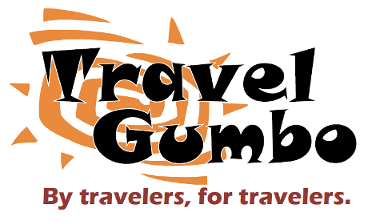The owner’s house, Empire Cottage, looks English for a reason. William Bourn, Jr. was a student at Cambridge University when his father, San Francisco businessman William Bourne, Sr. died in 1879 and 22 year old William, Jr. was called home by his mother to run the family business.
The cottage seems surprisingly small but it was a summer home, not the Bourn family’s main residence, which was a mansion on Webster Street in San Francisco’s Pacific Heights. After the city suffered it’s catastrophic 1906 earthquake and fire, the Bourns built their magnificent 43-room mansion, Filoli, with its famous gardens on 600 acres in Woodside, 30 miles south of San Francisco. Both Empire Cottage and Filoli, also open to the public, were designed by pioneering San Francisco architect Willis Polk.
Empire Cottage, dining room with natural redwood panelling.
View from the pantry to the dining room beyond.
Empire Cottage, rear view.
The Clubhouse, for family and guests.
The Facts: The Empire Mine is the largest, richest and longest-operating gold mine in California, opening in 1850 and producing 5.8 million ounces of gold before closing in 1956, when mining costs became more than the fixed price of gold. The current park, acquired by the State of California Park System in 1975, covers 777 acres of well-kept gardens, pine woods and hiking trails, in addition to the mine buildings, equipment, clubhouse, cottage and domestic buildings. The state owns only the surface and beneath it run 367 miles of tunnels, bought in 1929 by Newmont Mining Corporation. William Bourn, who had suffered a debilitating stroke, also sold Spring Valley Water Company to the City of San Francisco, and San Francisco Gas Company to Pacific Gas & Electric Company and he and Agnes, Mrs. Bourn, retired to Filoli.
Azaleas
Rugosa Roses
Wisteria in the giant pines.
The park is about a mile from my house in Grass Valley and, though I’d been there before and admired the gardens and the cottage from the outside, I went back the day after Easter to take the tours given every day starting at 1:00. Our guide, Dan, gave a wonderfully entertaining tour, first an hour devoted to the clubhouse and the cottage, then another hour to the mine, explaining how the technology introduced at the Empire Mine revolutionized hard rock gold mining.
Dan explains the workings of a stamp mill.
Hoist house, stairs lead to the miner's changing room,
man-skip to take them underground, on track above.
A man-skip, on what's left of the headframe.
Machine Shop
Mine office entrance from outside the fence.
Lower level of mine office complex and refinery,
which produced 89-pound bars of gold bullion.
The story of the Empire Mine and the Bourn family, owners from 1869 until 1929, it’s managers and employees, is fascinating, and a visit to the park to wander the beautiful grounds, to take the tours and to learn its history is well worth the trip.
Read more about the Empire Mine and the Bourn family:
http://www.parks.ca.gov/?page_id=499
https://en.wikipedia.org/wiki/..._State_Historic_Park
To read more of PortMoresby's 'Gold Country, California' series, click here.
To read more of PortMoresby's contributions, click here.

Comments (6)